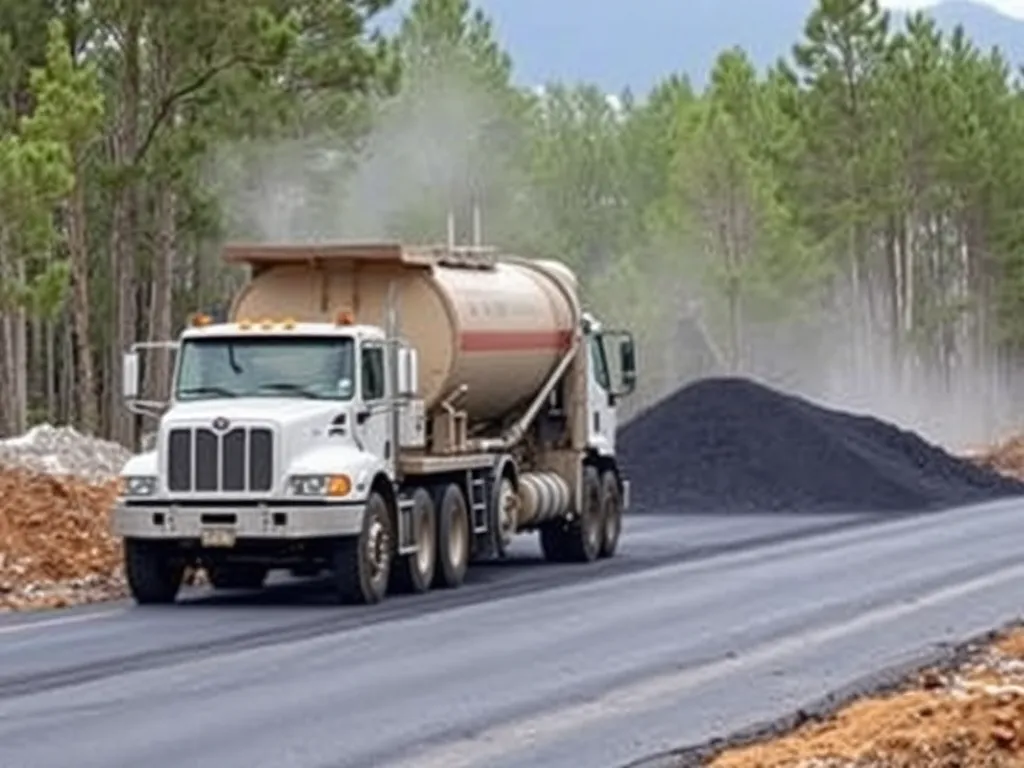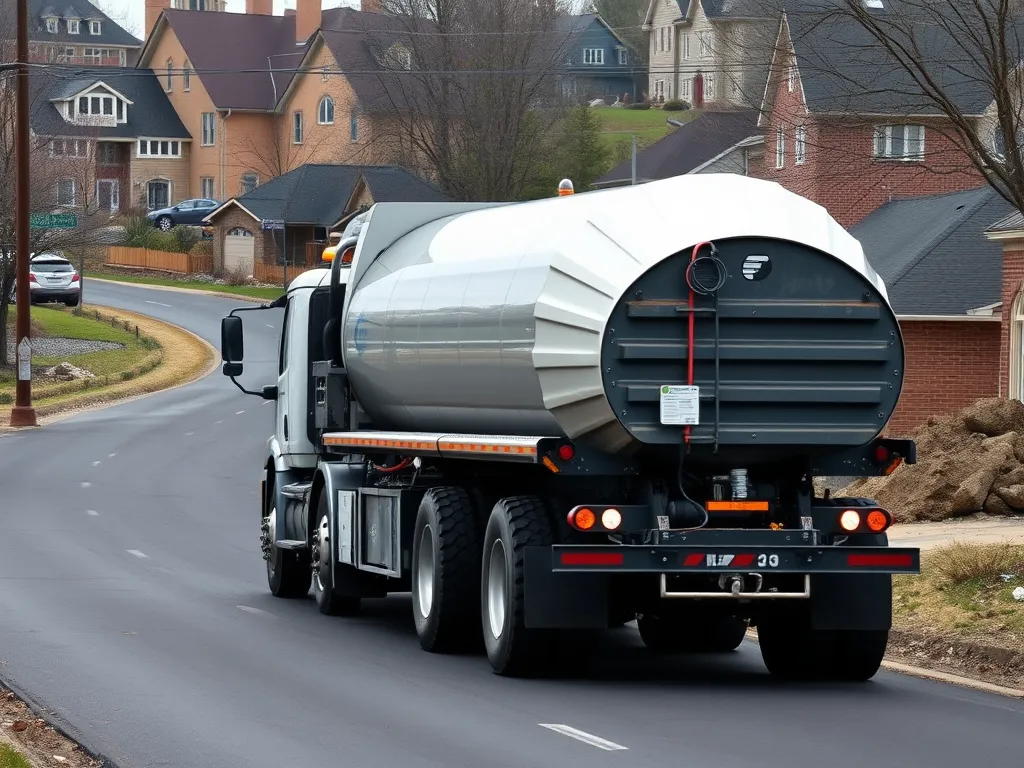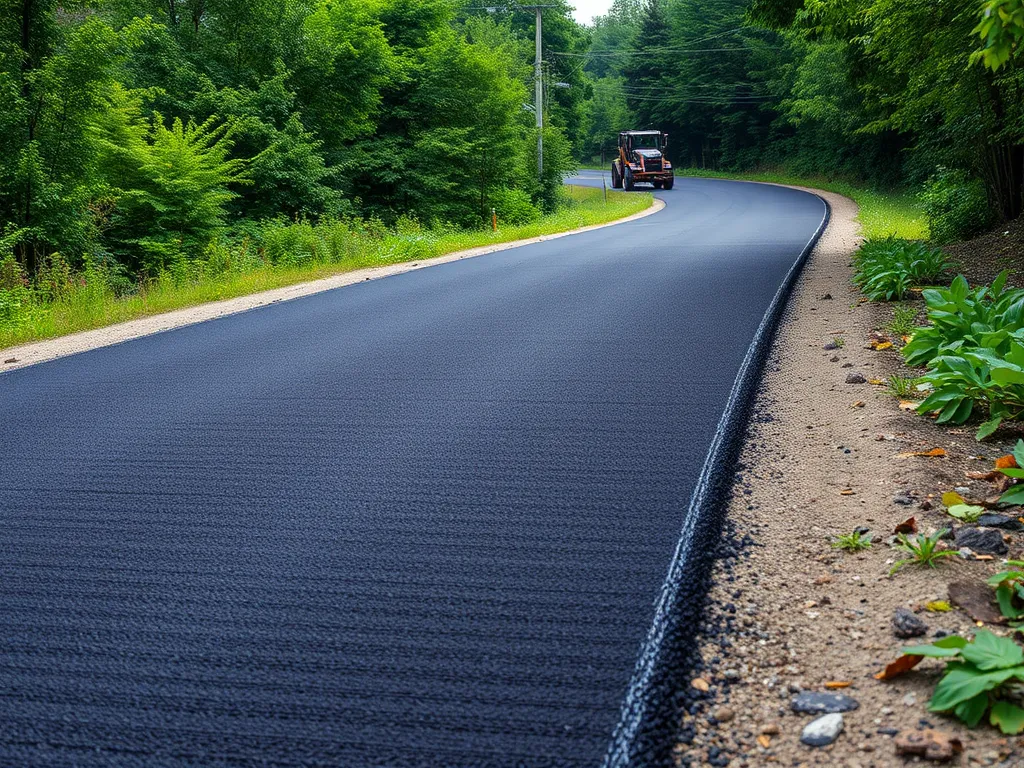Building Better Roads Together: How Cities and Asphalt Makers Team Up for Success
Published on: October 18, 2025 | Last Updated: April 14, 2025
Written By: George Voss
Collaboration between municipalities and asphalt manufacturers combines local government needs with industry expertise to create durable, cost-effective road solutions. These partnerships use shared funding programs like federal Highway Trust grants and new technologies such as warm-mix asphalt (a low-emission production method) to cut costs by 15-30%. Projects like Phoenix’s recycled asphalt program show how cities reuse 95% of old pavement in new roads. Joint efforts also meet sustainability goals through eco-friendly polymer-modified mixes and 25% faster project timelines via synchronized planning.
This article breaks down how cities and asphalt companies work together to fix potholes, repave highways, and fight urban heat. We’ll cover money-saving tactics, real-world examples like Houston’s cool pavement project, and tools like Asphalt Calculator USA for precise material estimates. You’ll also learn how drones map cracks in roads and why 40% of U.S. asphalt now contains recycled materials.
Contents
- Key Benefits Of Municipalities Partnering With Asphalt Manufacturers
- Strategic Approaches for Municipalities and Asphalt Producers
- Case Studies: Successful Municipal-asphalt Manufacturer Collaborations
- Technology and Innovation in Asphalt Manufacturing Partnerships
- Environmental and Regulatory Considerations in Collaborations
- FAQs: Collaboration Between Municipalities and Asphalt Manufacturers
- Closing Thoughts
- Additional Resources for You:
Key Benefits Of Municipalities Partnering With Asphalt Manufacturers
Joint work between towns and asphalt makers cuts costs, boosts road life, and speeds up jobs. Both sides share skills to fix shared pain points in paving tasks.
Cost Efficiency in Asphalt Procurement and Road Maintenance
Team deals with asphalt makers let towns buy mix at bulk rates. Long-term pacts lock in lower costs per ton – often 15-30% less than spot buys. Shared gear like pavers or rollers cuts rental fees.
- Group buys across nearby towns drive prices down
- Reuse of milled old roads cuts new mix needs by 40%
- Pre-set repair plans trim emergency fix costs
Enhanced Quality Of Asphalt Materials for Durable Infrastructure
Close ties let towns get mix made for local needs. Makers tweak binders (like PG 64-22) to handle freeze-thaw cycles or heavy trucks. Tests show these custom blends last 20+ years vs 12 for standard options.
New tech like warm-mix asphalt (made at 250°F vs 300°F) cuts fumes and sets faster. Towns in Arizona used this to boost road life by 8 years while meeting clean air rules.
Streamlined Project Timelines Through Collaborative Planning
When towns loop in makers early, plants can stockpile stone and liquid asphalt. This avoids delays when work starts. Joint use of tools like Asphalt Calculator USA nails down tonnage needs within 5% accuracy.
- Shared dashboards track truck routes in real time
- Night pours cut traffic snarls by 70% in metro jobs
- Pre-bid site walks spot drainage issues upfront
These gains set the stage for smart next steps in town-asphalt team-ups. Up next: how to pick the right tactics for joint road projects.
Strategic Approaches for Municipalities and Asphalt Producers
Productivity in municipal paving starts with aligning road plans to local conditions. City planners must sync with asphalt suppliers for municipalities to match mix designs to traffic loads, climate, and budget limits. This coordination allows towns to fix potholes fast or rebuild highways without delays.
Assessing Municipal Asphalt Needs and Project Scope
Traffic counts and road rankings guide how much material a town requires. A rural route with 500 cars daily might use PG 64-22 binder, while urban highways need PG 76-28 for heavy trucks. Climate plays a role too—cities in frost zones add polymer modifiers to stop cracks. A 2023 survey found towns that audit road conditions annually cut asphalt costs by 18% through proactive repairs.
Best Practices in Asphalt Procurement and Contract Negotiations
Multi-year contracts with manufacturers of asphalt municipalities lock in rates below spot market prices. Phoenix saved $2.1M across three years using volume discounts on Superpave mixes. Performance clauses tied to rutting tests or density specs push quality higher. Smart towns also split big jobs into phases, letting asphalt suppliers for municipalities adjust mixes as weather shifts.
Leveraging Tools Like Asphalt Calculator USA for Project Planning
Inputting road length, width, and depth into Asphalt Calculator USA gives instant tonnage quotes. A 2-mile, 24-foot-wide road needing 3 inches of hot-mix requires roughly 6,720 tons. This data helps towns compare bids from asphalt local government partners. In Tacoma, using digital tools cut bid analysis time by 40% during 2022’s $15M paving program.
Up next: How towns from Austin to Anchorage put these tactics into action. Real-world wins show what’s possible when asphalt industry local government teams sync goals.

Case Studies: Successful Municipal-asphalt Manufacturer Collaborations
Joint efforts between asphalt suppliers municipalities and civic planners yield measurable results. Three recent initiatives demonstrate how asphalt local government partnerships drive innovation while cutting costs.
Cool Pavement Implementation for Urban Heat Reduction
Phoenix partnered with asphalt manufacturers to install reflective pavements across 100+ lane miles. Using polymer-modified binders blended with high-albedo aggregates, surface temperatures dropped 12°F. The collaboration municipalities asphalt manufacturers team prioritized PG (Performance-Graded) 76-22 binders for thermal durability. Annual cooling cost savings: $0.18 per square foot.
Recycled Asphalt Use in Rural Road Rehabilitation
Boone County saved $287,000 by teaming with producers of asphalt municipalities on a 14-mile rebuild. The mix contained 40% RAP (Recycled Asphalt Pavement), meeting ASTM D6932 specs. Grants from state sustainability programs covered 30% of material costs. Road lifespan projections jumped from 8 to 15 years.
Drone Technology for Efficient Pavement Condition Assessments
When Cedar Rapids collaborated with asphalt suppliers for municipalities, they deployed drones with multispectral cameras. This cut pavement survey times from 3 weeks to 4 days citywide. Shared data platforms let manufacturers adjust mix designs based on real-time PCI (Pavement Condition Index) scores below 50. Resurfacing budgets fell 22% year-over-year.
These partnerships between municipalities asphalt producers prove that shared resources create smarter infrastructure. Up next: how emerging tech reshapes these alliances further.
Also See: Asphalt Paving Techniques: Tips for Best Results
Technology and Innovation in Asphalt Manufacturing Partnerships
Joint work between towns and asphalt makers drives smart fixes using new tools. Teams blend fresh ideas with real-world needs to build roads that last longer and cost less.
Adopting High-performance and Recycled Asphalt Mixes
Towns now ask for mixes like RAP (Recycled Asphalt Pavement) and WMA (Warm Mix Asphalt). These cuts costs by up to 30% and lower temps by 50°F during paving. Makers tweak binders (like PG 64-22) to suit local weather, while towns share traffic data to pick the right blend. Phoenix, AZ saved $1.2M using 40% RAP on 50 lane miles in 2022.
Advanced Testing Solutions for Quality Assurance
Labs run tests like PG grading and Hamburg wheel tracking to check rutting risks. Towns set specs; makers meet them. Shared dashboards track:
- Binder stiffness at -12°F to 220°F
- RAP content limits (15-35%)
- Density targets (92-96%)
Portland, OR cut failed tests by 60% using real-time data swaps with suppliers.
Digital Tools for Optimizing Asphalt Quantity Estimates
Apps like Asphalt Calculator USA let towns input road length, width, and depth to get tonnage needs. Makers use these numbers to plan batch loads, cutting waste by 15%. A 2-mile resurfacing job needing 8,000 tons can save $24,000 at $3/ton. GPS-linked trucks update towns on mix delivery times within 10-minute windows.
These tech steps set the stage for green goals. Next, we’ll see how teams tackle rules and eco needs while paving smarter.

Environmental and Regulatory Considerations in Collaborations
Municipalities and asphalt manufacturers face growing pressure to balance infrastructure demands with ecological responsibility. Joint efforts now prioritize reducing environmental footprints while navigating complex regulations.
Sustainability Initiatives in Asphalt Production and Application
Partnerships between municipalities and asphalt producers increasingly adopt recycled asphalt pavement (RAP), reusing up to 40% of old materials in new mixes. Warm-mix asphalt technologies cut production temperatures by 50°F, lowering energy use and greenhouse gas emissions. Cities like Phoenix and Denver now specify PG (Performance-Graded) binders in contracts, ensuring asphalt withstands local climate extremes. Superpave mix designs—tailored to traffic loads and weather—extend pavement life by 30% compared to conventional methods.
Meeting Regulatory Standards for Asphalt Material Compliance
Collaborations require strict adherence to EPA guidelines for stormwater management and VOC (volatile organic compound) limits during production. Asphalt plants serving municipalities must pass AASHTO T 283 tests for moisture resistance and meet state-specific recycled content mandates. Joint audits between city engineers and manufacturers verify compliance with air quality permits and material specs. Non-compliance risks fines up to $37,500 per violation under the Clean Air Act.
Community Engagement in Eco-friendly Paving Projects
Public forums and digital dashboards keep residents informed about paving schedules and environmental benefits. In 2023, Austin’s “Cool Pavement Initiative” engaged 15,000 citizens through workshops explaining how high-albedo surfaces reduce urban heat islands by 10°F. Manufacturers share recycling metrics—like diverting 1.2M tons of waste annually—to build trust. Tools like Asphalt Calculator USA provide real-time data on material savings, helping communities visualize cost and carbon tradeoffs.
These eco-focused strategies set the stage for examining how cities and manufacturers turn plans into pavement through real-world projects.
FAQs: Collaboration Between Municipalities and Asphalt Manufacturers
How Do Municipalities Benefit From Asphalt Manufacturer Partnerships?
Municipalities gain numerous advantages from collaborating with asphalt manufacturers, including cost savings from bulk purchasing, access to customized asphalt mixes tailored to local climatic and traffic conditions, and improved project timelines due to synchronized planning. These partnerships also enhance the quality of the materials used, leading to durable road infrastructures.
What Challenges Arise in Asphalt Procurement Negotiations?
Challenges can include price fluctuations in the asphalt market, the complexity of drafting contracts that satisfy both parties, and ensuring compliance with regulatory standards. Additionally, misalignments in timelines or project scopes can lead to disputes, requiring effective communication and negotiation skills from both municipalities and manufacturers.
How Are Environmental Concerns Addressed in Joint Projects?
Environmental concerns are addressed through initiatives such as using recycled asphalt materials and adopting warm-mix asphalt technologies. These practices reduce waste and lower greenhouse gas emissions. Municipalities often engage in community outreach to inform residents about eco-friendly practices being implemented in paving projects, fostering transparency and community support.

Closing Thoughts
Collaboration between municipalities and asphalt manufacturers leads to enhanced efficiency, quality, and sustainability in road construction and maintenance. By partnering together, they can achieve cost savings, reduce project timelines, and ensure the use of high-performance materials.
Establishing effective communication and leveraging technological tools can streamline this partnership, making it more productive for everyone involved. Successful case studies highlight the positive impacts of such collaborations, from cool pavements that combat urban heat to the effective use of recycled materials.
Finally, as environmental considerations grow increasingly important, these partnerships play a pivotal role in implementing sustainable practices and meeting regulatory standards. Communities benefit from eco-friendly paving projects that not only improve infrastructure but also promote public well-being.
For more tips and resources on asphalt calculations and project planning, visit Asphalt Calculator USA.
Additional Resources for You:
- Huang, Y. H. (2004). Pavement Analysis and Design (2nd ed.). Upper Saddle River, NJ: Pearson/Prentice Hall.
- Municipal Asphalt Plant – Wikipedia
- National Asphalt Pavement Association (NAPA) – National Asphalt Pavement Association
- ACM: asphalt producers are allowed to collaborate in order to make production more sustainable | ACM.nl
- Homepage | Asphalt Pavement Alliance


